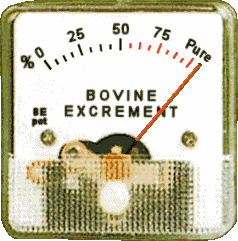From a Tweet thread posted on 1 November, 2021 by Kurt Eichenwald ¹
Sharing because it needs sharing.
“The Great Resignation” is not about people not wanting to work. It is about a dawning recognition that, for a larger and larger portion of this country, the American dream is dead, and with it, the inspiration of working toward a better future for oneself. Instead, work becomes not the means towards reaching an aspiration – a spouse, children, a home, vacations, personal growth, a retirement. Instead, the greed culture has turned work for millions into just a means of survival, with wages stagnant, healthcare unaffordable, insurance treated as a luxury, paid free time an impossibility, children unaffordable, homes a dream. Yes, work is important – but not without the promise of a future. Many young people see nothing but 40 years of the same, further enriching the obscenely rich. This system has taught people how to survive without, because they don’t believe they will ever have. If they reasonably don’t believe they will ever be able to afford a house or to raise children, and never will have group insurance or a paid vacation, and can make it living with their parents, and have already been taught by McResources (real thing) and Walmart how to apply for Food Stamps and Medicaid because those multibillion dollar corporations know they don’t pay enough for their employees to survive, and are already getting those benefits, and have the choice of just saying “forget it, im going to work on my painting or sewing or whatever, I am tired of being abused by my supervisor, I am tired of being screamed at by customers for things out of my control, I am tired of watching adults throw temper tantrums and then being [bawled] out by my company because I could have handled it better. I can survive without all of this. I can be happier without all of this. I am paid so little, my life won’t be that different.”
THAT is why we have the Great Resignation. Because we, the Boomers have endlessly sucked up the capital that could go down to the younger generations to enrich ourselves, then pushed down the debt. Entry level jobs that can be done with a high school education now demand college degrees, PLUS unpaid internship experience. So, to do most anything with the possibility of a future, younger generations have to go to college. But to do it, they have to load up on debt. Then we sneer at them when they talk about how their terrible wages and horrible debt make home buying etc. impossible. Oh sure, the children of ..the rich are fine. And their parents sneer “maybe stop buying avocado toast” as if a single pleasure in life equals the cost of a home. All of this starts and stops with greed and corporations. Pay more, and stop pulling up the ladder. Not all jobs need college degrees.
Many years ago, I interviewed Bill Clark, then the National Security Advisor under Reagan. After the interview, I asked him some background, and asked what college he got his degree from. Sheepishly, he said he didnt. Only had a high school degree. Thats the 1980s – the National Security Advisor for the President of the United States had only a high school education. But I will bet anything, to be the social media voice at Wendy’s, no matter how funny you are, you have to be a college graduate with internships in social media etc etc. Not all jobs need college degrees. Companies need to stop requiring them for jobs that don’t. And they need to start paying fair wages. And treating people like human beings.
People never wanted to “work.” They wanted to invest their effort toward living a better life. And if work doesn’t do that, if work merely makes life worse to people who have been taught how to survive without wages so that McDonalds and Walmart et al can shift their wage costs onto taxpayers, then a Great Resignation was inevitable.
Footnotes
¹ Kurt Alexander Eichenwald (born June 28, 1961) is an American journalist and a New York Times bestselling author of five books, one of which, The Informant (2000), was made into a motion picture in 2009. Formerly he was a senior writer and investigative reporter with The New York Times, Condé Nast’s business magazine, Portfolio, and later was a contributing editor with Vanity Fair and a senior writer with Newsweek. Eichenwald had been employed by The New York Times since 1986 and primarily covered Wall Street and corporate topics such as insider trading, accounting scandals, and takeovers, but also wrote about a range of issues including terrorism, the Bill Clinton pardon controversy, Federal health care policy, and sexual predators on the Internet. (Wikipedia)
























